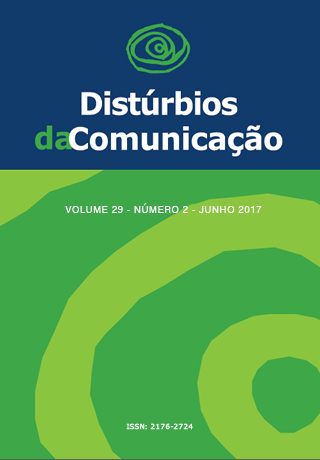Association between language development and school environment in children of early childhood education
DOI:
https://doi.org/10.23925/2176-2724.2017v29i2p342-353Keywords:
Speech, Language and Hearing Sciences, Language development, Child Education.Abstract
Objective: To investigate the association between language development, quality of school environment, parental education, gender and age of children aged four to six years, enrolled in Municipal Units of Early Childhood Education in Belo Horizonte. Methods: Observational analytic cross-sectional study with probabilistic sample. One hundred and sixty nine children aged four to six years enrolled in five Municipal Units of Early Childhood Education were studied. The instruments used were: structured questionnaire, Language Development Assessment protocol and Early Childhood Environment Rating Scale-Revised. A descriptive analysis of the data and association between the exposure variables and the events was performed. As statistically significant associations were considered those with p value ≤0.05%. Results: 47.9% of the children were male and 52.1% were female, with the predominant age of five years (62.7%). 22.5% of the children had some language development disorder. Guardians with complete secondary education and incomplete high education (42.6%) predominated. The overall average ECERS-R score indicated a quality level between minimum and good; the highest average regarding quality of the school environment was referred to the interaction subscale, which corresponds to a level between good and excellent. There was statistically significant association only between language development and the interaction subscale and age. Conclusion: The language development was significantly associated with age and the interaction domain of the ECERS-R scale. There was no statistical association between language outcome and the variables: school environment, language and reasoning domain of the ECERS-R scale, gender and parental education.Downloads
Downloads
Published
Issue
Section
License
Copyright (c) 2017 Julie Mary Mourão Alves, Amanda de Jesus Alvarenga Carvalho, Stella Carolina Gonçalves Pereira, Andrezza Gonzalez Escarce, Lúcia Maria Horta Figueiredo Goulart, Stela Maris Aguiar Lemos

This work is licensed under a Creative Commons Attribution 4.0 International License.









